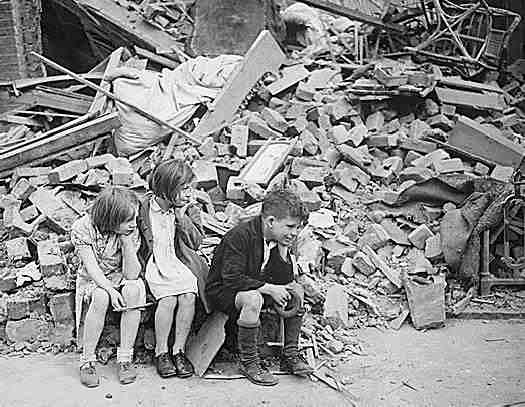
Figure 1.--These London children have just been bombed out of their home. Unlike World War I, many of the children lost their mothers and close realtives as a result of the German bombing of civilian populations.

World War II had a profound, if delayed, impact on boys' fashions in England, as it did in America. This is not unusual, as wars and social upheaval often affect fashion. The impact, however, was slower to be felt because of the strained finances of most families, and rationing which continued for years after the war. The esentially traditional approach to fashion of the British also delayed changes. The British during the Second World War, had to institute a major rationing program. Not only food but also clothing was rationed, as supplies of every kind were so scarce. To ensure that resources were not wasted, the Board of Trade strictly controlled what was manufactured (for example, men's jackets could not be double-breasted, lapels could not be wide). As part of this, it was forbidden to manufacture long trousers in boys' sizes. Clearly a given amount of cloth could make more pairs of shorts than of longs. Clothing was one of the items rationed. For many of us outside the U.K., it is this period that we often think about when we think of English children's clothes--perhaps becaise of the publicity about England during the War, including many films and television shows. Another factor that has to be considered is the number of displaced children and children who lost one or both parents. This was quite different than World War I because of the bombing of English cities resulted in substantial civilian casulties.
World War II had a profound, if delayed, impact on boys' fashions in England, as it did in America. This is not unusual, as wars and social upheaval often affect fashion. The impact, however, was slower to be felt because of the strained finances of most families, and rationing which continued for years after the war. The esentially traditional approach to fashion of the British also delayed changes. We believe that the major impact was to encourage the use of poractical less formal clothes. We note that clothing boys' styles after the War, both school clothes and regular clothes, were indeed much less formal than before the War.
The British during the Second World War, had to institute a major rationing program. Not only food but also clothing was rationed, as supplies of every kind were so scarce. Clothing was one of the items rationed. Clothes were not only ration in England during the year, but because of how Britain was weakened by the War, rationing had to be continued for several years after the War. We do not yet have detailed information on how rationaing operated in England.
To ensure that resources were not wasted, the Board of Trade strictly controlled what was manufactured (for example, men's jackets could not be double-breasted, lapels could not be wide). As part of this, it was forbidden to manufacture long trousers in boys' sizes. Clearly a given amount of cloth could make more pairs of shorts than of longs.
For many of us outside the U.K., it is this period that we often think about when we think of English children's clothes--perhaps becaise of the publicity about England during the War, including many films and television shows.
Another factor that has to be considered is the number of displaced children and children who lost one or both parents. A variety of factors are involved here. Many London and other city children were sent to live with family and strangers in rural areas that the Germans did not target during the Blitz and subsequent bombing. Another factor were the civilian casualties. The horrendous casulties in World War I were virtually all male combatents. Substantail numbers of civilians were killed in the Blitz and later V-1 and V-2 attacks and huge numbers of homes destroyed. This was quite different than World War I because of the bombing of English cities resulted in substantial civilian casulties. One Londoner tells that after a V-2 hit a crowded London Wollsworth in 1944 that the neighbor children came by to say that "mummy hasn't come home yet". Many of these children were taken care of my surviving parents or families, but many had to be institutionalized. We have not yet assessed the impact of the World War II displacement.
Navigate the Boys' Historical Clothing Web Site:
[Return to the Main English chronology page]
[Introduction]
[Activities]
[Bibliographies]
[Biographies]
[Chronology]
[Clothing styles]
[Countries]
[Contributions]
[FAQs]
[Glossaries]
[Satellite sites]
[Boys' Clothing Home]
